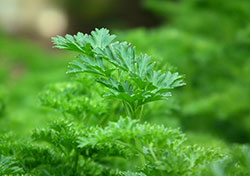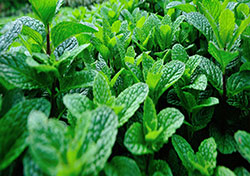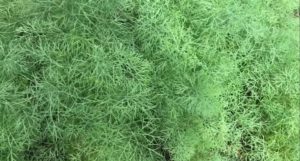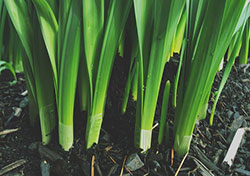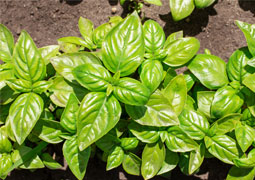Oregano is a family of mint, hence it’s aromatic, earthy, and bold flavor. For culinary purposes, oregano is most commonly used for recipes that are tomato-based and olive oil-based like pizza, pasta, and green salad. Just imagine garnishing your freshly baked pizza with some fresh, green, and crisp oregano leaves, seems tasty, isn’t it?
In some countries particularly in Asia, oregano is widely used as a medicinal herb that cures cough, serves as a natural antibiotic, lowers cholesterol, improves gut health, etc. Some even boil oregano leaves and drink these as an alternative to tea. In some in depth medical practices, oregano may have been found to contain some cancer-fighting properties.
Knowing how to use oregano as a culinary additive or or a medicinal plant is one thing, but learning how to harvest it without killing the entire plant is another. Make sure that you make your first harvest a good one by following these helpful instructions written below.
Growing Conditions
Oregano can be considered as a low maintenance plant that has the ability to grow year after year. Interestingly, some oregano are a decade old and have actually withstood heat and cold and remain to be deeply rooted on the ground.
Additionally, people who have limited garden space can still grow such herb because it grows well to both ground and container gardening. Whichever you prefer and suited best for your resources, these are the growing conditions of oregano that you need to meet.
- Weather Conditions
Oregano thrives well in warm weather so it is recommended to grow this herb during the last frost in spring or when the temperature hits 45 degrees F or even warmer. Adversely, your oregano plant may need some protecting especially during the winter season.
You may also opt to grow your oregano in a container and place it indoors for as long as the temperature is between 65 and 70 F.
- Sun Exposure
Depending on the variety of oregano that you are growing, your plant may need partial to full sun in order to grow vigorously.
The golden oregano, for instance, will only need partial sun to thrive, exposing it to full sun or too much sunlight will burn its leaves. Meanwhile, for most varieties, the flavor intensifies when it receives full sun all day long.
In growing oregano indoors, you will need to place near the windows or anywhere where it can still receive an adequate amount of sunlight.
- Soil Requirements
The most suited type of soil for oregano is light, well-drained, and moderately fertile, therefore using fertilizer or organic compost won’t be necessary as it will only decrease the chances of the plant growing appropriately. It can also tolerate poor soil with a pH of 6.5 to 7.0.
- Watering
Oregano does not need constant watering. As a matter of fact, it is preferred that you water your oregano only when the soil is dry to touch.
When watering your oregano, make sure not to overwhelm it; just use an adequate amount of water for the soil to moisten. This is also the very reason why you need a loose and well-draining soil.
If you are growing your oregano in a container, check if it has good drainage so the plant won’t be soaked when watered.
- Spacing
Oregano can grow up to 2 feet tall and spans about 18 inches across that is why it is necessary to allocate 8 to 10 inches distance from each oregano plant in a row.
Simultaneously, if you are growing your oregano in a container, make sure to use one that has a diameter of at least 12 inches to give your plant an ample space to grow.
- Companion Planting
What’s good about oregano is you can maximize your garden by planting other types of herbs, plants, and vegetables as it is known to be a good companion plant to almost anything.
One of the benefits that other plants get from being planted alongside oregano is its capacity to repel insects.
Harvest Period
The height of the oregano is an indicator whether it is ready to be harvested.
This herb is known for its strong, aromatic flavor; however, if you want a more flavorful harvest, you might want to wait just before the buds open as the leaves will most likely taste bitter when the flowers have started to bloom.
Morning is also the best time to harvest oregano when the dew has just dried out and the essential oils are more concentrated.
Process of Harvesting Oregano
Like any other herb, harvesting oregano encourages your plant to grow more aggressively and produce healthier and fresher leaves.
However, this does not mean that you can harvest anytime. You have to wait until your oregano plant is 4 inches tall before you can harvest, otherwise it will fail to thrive.
When your oregano is ready and mature enough, follow these steps to harvest your plant without killing it.
- Using a pair of scissors or garden shears, cut back stems from the plant just above a growth node. This will allow your plant to grow a new branch of stems from the snipped area to produce more leaves for future harvest.
- Do not cut back more than ⅓ of the plant to avoid over pruning. Harvesting more than the recommended amount will lead to the exact opposite of steering clear of killing your plant.
- While you may try cutting several stems all at once especially if you need quite a number of oregano, it is still recommended to cut one stem at a time to avoid damaging the new growth.
- You could also use the simplest method of pinching when removing the stems off of the plant especially if you just plan to harvest 1 or 2 stems of leaves. It will be helpful if you hold the base of the stem to serve as support and avoid further damage while making the harvest.
- Alternatively, if you just need a few pieces of oregano leaves, there’s no need for you to cut back the stems. Instead, you can just run your thumb and middle finger beneath the leaves you want to harvest and carefully pull them off of the stem.
Harvesting Tips
When oregano flowers, it affects the growth of the entire plant. So, to be able to divert the plant’s energy to producing more flavorful leaves instead of seeding, you need to deadhead the flowers as soon as they start fading. You can either cut just beneath the flower or pinch it off of the stem.
Oregano does not thrive well during the cold season, however you can help decrease the risk of it from totally dying if you stop pruning or harvesting about two weeks before the forecasted winter comes.
Fast forward to the end of the cold season, you can start preparing your oregano plant for regrowth by removing brown and dead leaves and stems from the plant.
Storing and Using
Unlike other herbs, oregano is actually preferred to be used dried rather than fresh. In this case, there are 3 common ways to do so that we would like to share. These are as follows:
A. Hang the oregano to dry
- Get a medium size paper bag and make a few holes (10-15) on each side.
- After cleansing the freshly harvested oregano with running water, bundle 2-4 stalks together and put them inside the paper bag with the stalks sticking out.
- Tightly tie a knot around the stalks until the opening of the paper bag is securely sealed.
- Hang the paper bag. Drying oregano using this method should take about 2 to 6 weeks.
B. Use a food dehydrator
- Get rid of the stalks and lay flat the fresh oregano leaves on the dehydrator tray, leaving 1-2 cm space between each other.
- Preheat the food dehydrator 100 °F and set the moisture setting to the lowest level possible.
- After 5-10 minutes, your food dehydrator is just about ready. Re-insert the trays inside the food dehydrator to start the process.
- It typically takes 1-4 hours for the oregano to completely dry up. Check periodically to avoid burning your oregano.
- Once it’s done. Let it cool first for about 20 minutes before crumbling and finally keeping it in an airtight container.
C. Bake your oregano in the oven
- Start by preheating your oven to 170 F.
- Get the baking pan and lay flat your oregano, leaving about 1 in space between each other.
- If you are only using the leaves, baking it will take an hour. But if you are not getting rid of the stems, it might take a bit longer.
- When done, remove the oregano from the tray; let it cool for 10-20 minutes, crumble and then keep it in an airtight container.
Dried oregano generally maintains its strong flavor for about 1 to 3 years. To ensure that the flavor won’t fade through the years, make sure to keep them in an airtight container.


